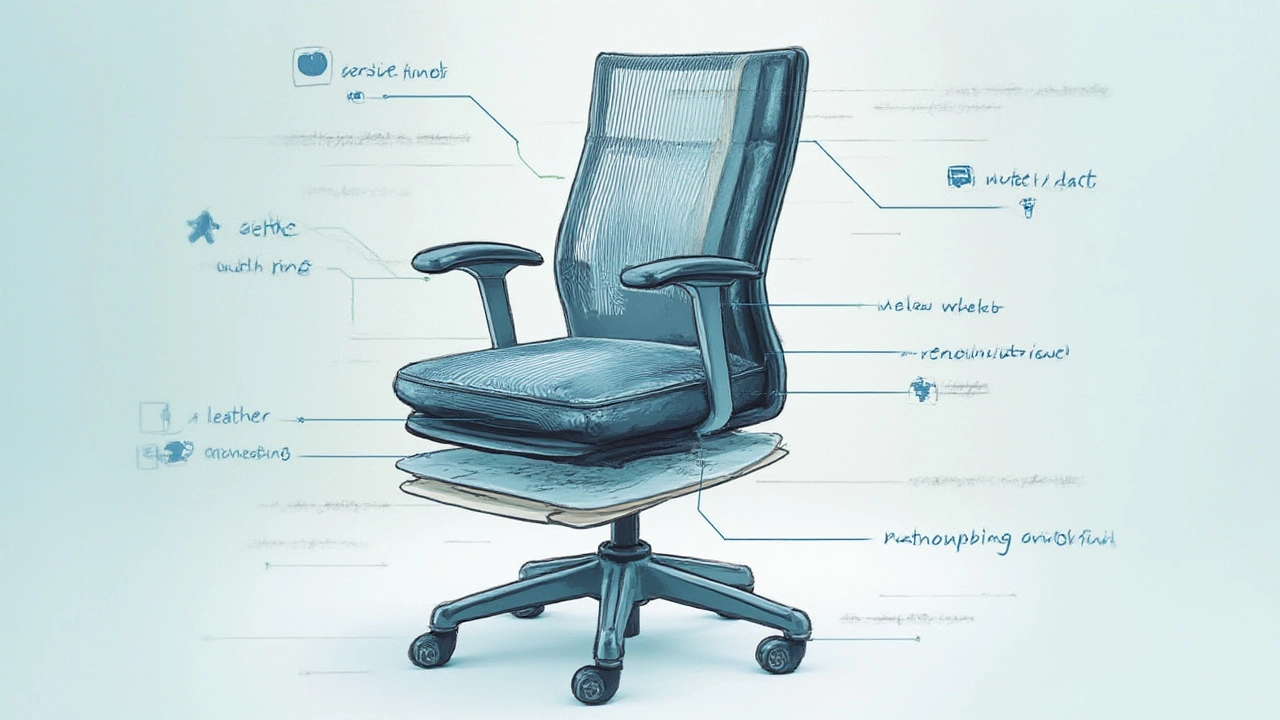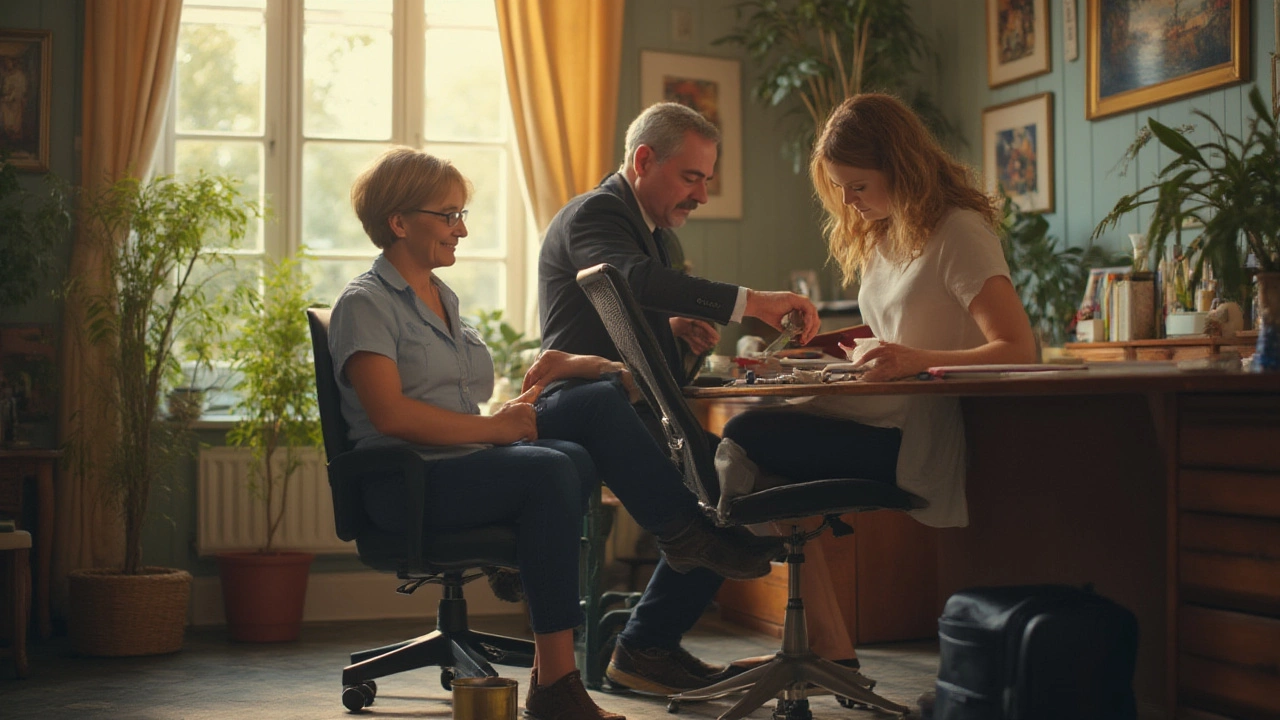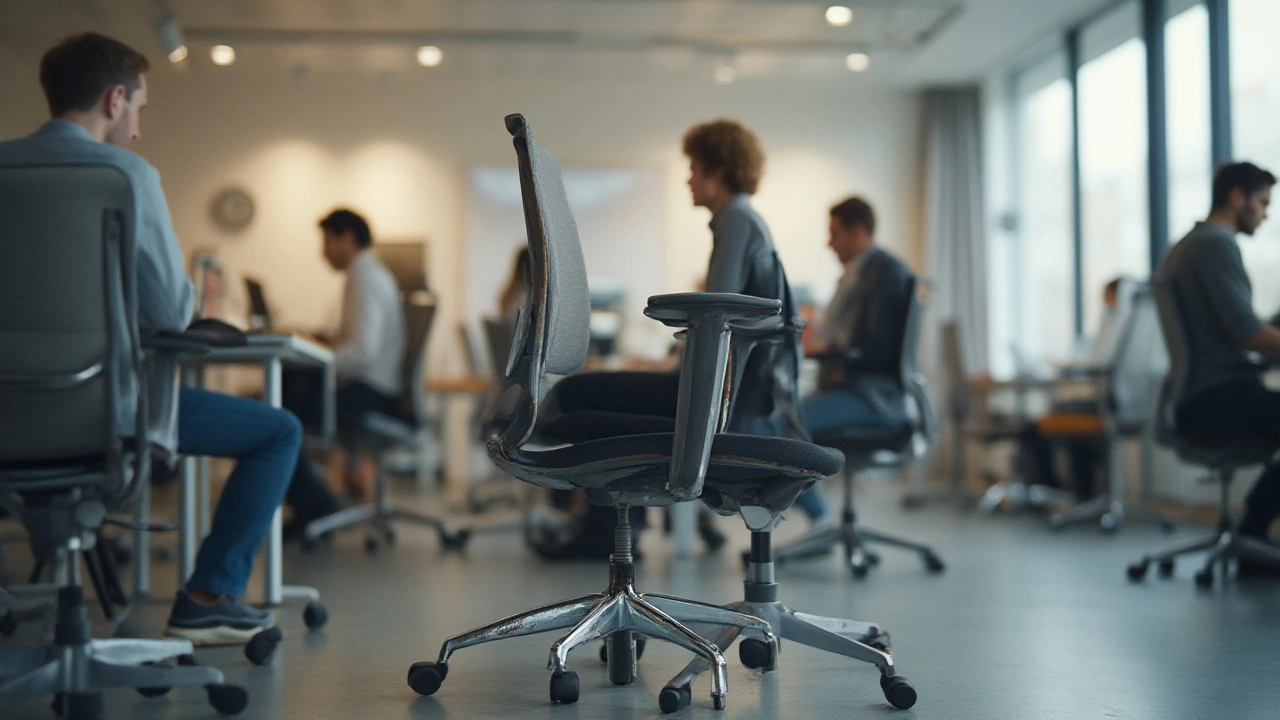That creak you heard during your last Zoom call? It might be your office chair hinting its best days are behind it. People spend about ninety thousand hours working in a lifetime, and if you’re glued to a desk, that seat matters more than most folks think. Buy a bad chair, and you’ll notice—aches, squeaks, annoying wobbles. Get a good one and it melts away; all you feel is the day's work. The big question: how long should a good office chair last? It’s not as obvious an answer as you might hope. Some last just a year or two, others clock in a decade, yet heaps of people replace them early. Why? It’s a tangle of facts, materials, warranties, and good old neglect. Let’s pull up every thread and make it simple.
What Determines an Office Chair’s Lifespan?
Think of your chair like a car: mileage and use matter more than the paint job. If you’re on that seat all day, five days week, you’re burning through its life like a delivery driver does tires. The typical rule of thumb is that a well-made office chair can last seven to ten years. But what’s ‘well-made’ anyway? For starters, look at the frame—steel and aluminum outlast plastic, hands down. The gas lift—the part letting you smoothly adjust height—should be rated for more cycles, not just cheap press-fit assemblies.
Here’s a wild fact: some commercial chairs used in big offices are BIFMA rated (Business and Institutional Furniture Manufacturers Association). Basically, they’re lab-tested for tens of thousands of cycles of sitting, adjusting, leaning, rolling. Chairs that pass this eat up the years without falling apart. Mesh backs, if they use quality yarns and tight weaving, can outlast old splits-in-the-pleather. But mesh does stretch; foam in seats? It can compress and lose shape over time, particularly with cheaper polyurethane blends.
Then there’s the caster situation. Hard plastic wheels on carpet? Those will last, but your carpet won’t. Rolling on hard floors with the same wheels? Expect the casters to chip or get gritty, which ruins the smooth glide. Ball-bearing wheels and rubber casters extend life, especially if you clean the gunk out every month or so. Forget that step and you’ll be wrestling with a sticky chair.
Shockingly, a 2023 industry survey found that 42% of people replaced their office chair due to “squeaks and wobbles” before age five—most because the chair just felt off, not because it was totally shot. That means perception is part of the lifespan. A torn armrest won’t ruin the chair, but it looks bad enough that people swap it out early.
The table below gives you a peek at typical lifespans, depending on quality and environment:
| Chair Type | Average Lifespan (Years) | Warranty (Usually) |
|---|---|---|
| Budget/Basic (Plastic, No Brand) | 1-3 | 1 Year |
| Mid-Range (Steel Base, Mesh or PU) | 5-7 | 2-5 Years |
| Premium/Ergonomic (Steel/Aluminum, Name Brand) | 7-12 | 5-15 Years |
One more angle—weight capacity. Most office chairs target users under 250 pounds. Pushing that or buying a chair with a lower rating cuts the lifespan, sometimes in half. So read those little labels and spec sheets before you hit buy.

Key Signs Your Chair’s End Is Near
You don’t need to wait for a chair to collapse mid-meeting before you replace it. There are some dead giveaways when it’s past its prime. If you feel new aches in your back or neck, and they go away when you sit on another chair, that’s your body telling you the cushioning is toast or you’ve lost the ergonomic support. When the tilt or height adjustment no longer stays put—maybe you raise it and it sags back down—or you hear unreliable creaking, the gas lift or internal supports may be giving out.
Another sneaky problem is uneven seat padding. It starts as a subtle sag on one edge, maybe under your dominant leg. After a while, you might notice you’re shifting constantly, just to find a comfy position. Ignore it and some people develop hip or sciatic pain. On some chairs, screws come loose or joints go wobbly—watch out, because those can sometimes be repaired, but they often signal deeper wear that’s not worth fixing on a budget model.
It’s not just about comfort. If you find the wheels jam frequently, or the base wobbles even after you check for loose bolts, these are safety issues. Chairs have been known to collapse, though thankfully that’s rare with reputable models.
Then there’s the great upholstery unraveling. PU leather (aka fake leather) can look sharp at first, but in a hot attic or sun-exposed location, it’ll crack and peel—and then flakes stick to your pants all day. Fabric chairs are a bit tougher, but they stain, wear thin, or start to smell if you eat lunch at your desk too often. Mesh can fray, especially at the edges, and that’s hard to fix without pro tools.
By the way, if your chair still looks decent but it’s past the warranty date and you hear groaning every time you lean, that’s a clue—the inside, out of sight, may be failing. Some expensive chairs even come with free replacement parts. Check if that’s true before you bin the whole thing.
Here’s a checklist of warning signs:
- Seat cushion flattened or deformed
- Backrest feels loose or unsupportive
- Noisy tilting / adjustment mechanisms
- Height won’t stay adjusted
- Wheels stick or fall out
- Visible cracks, splits, or sharp bends in the frame
- Chair feels wobbly even after tightening bolts
- Upholstery is torn, cracked, or irreparably stained
- You experience new pains after long sitting sessions
Don’t just tough it out—bad chairs wreck your posture and productivity. Average desk workers lose an estimated five workdays a year from back discomfort, and researchers at Cornell University found that upgrading to ergonomic seating reduced reported pain by nearly a third within six months.

How to Maximize the Lifespan of Your Office Chair
If you want to squeeze every day out of your investment, maintenance makes all the difference. First off, clean it right: vacuum the seat and back at least weekly, especially if you eat at your desk. For fabric, a little upholstery shampoo every few months does wonders. Mesh? Wipe it with a damp cloth, but don’t soak—water can stretch the weave if you go overboard!
When it comes to squeaky parts, don’t go spraying WD-40 everywhere. Lubricate only the casters and exposed metal moving parts with a silicone lubricant (it attracts less gunk than oil). Regularly flip the chair over, tighten all fasteners, and check that the casters glide smoothly. On premium chairs, some folks swap in upgraded wheels or armrests to refresh the feel without buying new.
You’ll also want to use your chair the way it was designed. No perching on the edge, standing on it, or dropping into it from a height. These seem obvious, but manufacturers report that up to 15% of warranty claims are denied due to “improper use.”
If you work at home and sunlight streams onto your chair, try rotating it or drawing the blinds during peak hours. UV light makes fabrics and faux leather brittle fast—sometimes in just a few summers. A simple seat cover can double the useful life in those conditions.
If you care about numbers, keep an eye out for heavyweight options labeled for 24/7 use—they’re designed for call centers and last almost twice as long as standard office seating (often ten years under constant use). Herman Miller’s Aeron or Steelcase Leap, for example, are known to outlive trends and still feel great after a decade with proper care.
Here are some simple tips:
- Vacuum and wipe down weekly
- Tighten bolts every two months
- Lubricate moving joints and casters quarterly
- Avoid direct sunlight for extended periods
- Readjust your seat regularly to prevent cushion dents
- Use a chair mat on hard floors to preserve casters
- Check your warranty for free replacement parts
- Swap arm pads or casters if they start wearing unevenly
If you’re eyeing replacement, don’t dump your old chair just yet. Many local charities or schools can refurbish good bases, and it keeps big hunks of steel and foam out of the landfill—almost 10 million office chairs get trashed in the U.S. each year alone.
The bottom line: smart owners who look after their chair, keep it clean, and don’t abuse it usually get at least seven solid years—and the best models? Those can outlast your job and probably your next one too. But ignore the little things, and you could kill even a premium chair in half the time.



